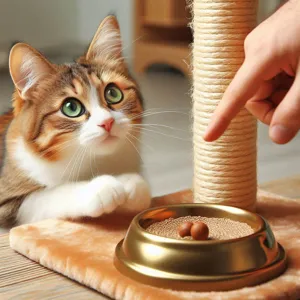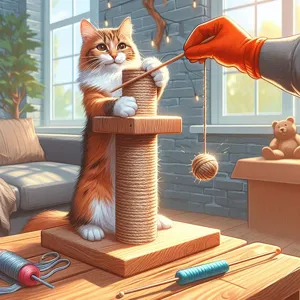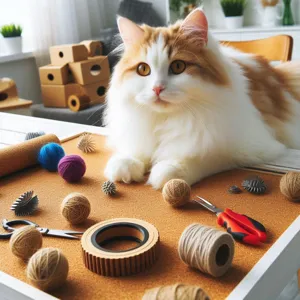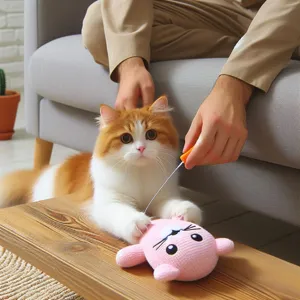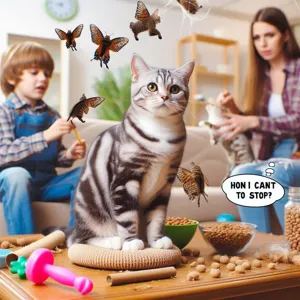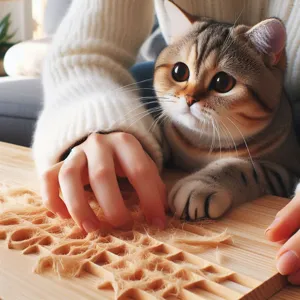The thrill of a tennis match, with its intense rallies and strategic volleys, can leave players exhilarated yet physically drained.
After giving your all on the court, it’s crucial to prioritize recovery to ensure your body is primed for the next challenge. Proper post-match recovery not only helps alleviate soreness and fatigue but also enhances overall performance, allowing players to bounce back stronger and more resilient than ever. In this blog post, we will explore essential recovery tips tailored specifically for tennis players, covering everything from effective stretching techniques and hydration strategies to nutrition that fuels muscle repair. Whether you’re a seasoned competitor or a weekend warrior, these insights will equip you with the knowledge to optimize your recovery routine and elevate your game to new heights. Get ready to serve up your best performance by mastering the art of post-match recovery!
1. Understanding the Importance of Post-Match Recovery

Understanding the importance of post-match recovery is crucial for any tennis player aiming to maintain peak performance and longevity in their career. After a grueling match, your body has undergone significant physical exertion, leading to potential muscle fatigue, dehydration, and even microscopic injuries to your muscle fibers. This is where effective recovery strategies come into play.
Post-match recovery is not merely about resting; it encompasses a holistic approach to restoring your body and mind. Proper recovery can enhance your subsequent performance by reducing the risk of injury, alleviating soreness, and improving overall flexibility and strength. It allows your muscles to repair and rebuild, ensuring you can return to the court stronger and more resilient.
Additionally, the psychological aspect of recovery should not be overlooked. Taking the time to reflect on your performance, celebrate your victories, and acknowledge areas for improvement can contribute to a positive mindset, fueling your motivation for training and competition.
Incorporating specific recovery techniques, such as hydration, nutrition, stretching, and rest, is essential. For instance, replenishing lost fluids and electrolytes is crucial to combat dehydration, while consuming protein-rich foods can aid in muscle repair. Gentle stretching or foam rolling can help alleviate tension and improve flexibility, while adequate sleep rejuvenates your body and mind.
By prioritizing post-match recovery, you not only safeguard your physical health but also cultivate a disciplined approach that sets you apart from your competitors. Embracing these recovery practices can significantly enhance your overall performance and contribute to a successful and sustainable tennis journey.
2. The Physiological Impact of Tennis on the Body
Tennis is a demanding sport that combines explosive movements, endurance, and agility, placing significant stress on the body. The fast-paced nature of the game requires players to engage in quick sprints, sharp lateral movements, and powerful strokes, all of which can lead to fatigue and muscle soreness. Understanding the physiological impact of tennis is crucial for effective post-match recovery.
During a match, your muscles undergo intense contractions, particularly in the legs, shoulders, and core, which can result in micro-tears. This is a natural part of building strength, but it also means that your body needs time and proper care to heal. Additionally, the cardiovascular system is pushed to its limits, with players often reaching high heart rates and experiencing elevated levels of lactic acid build-up, which can contribute to feelings of exhaustion and stiffness.
Hydration plays a vital role in counteracting these effects. As you sweat during a match, you lose not only water but also essential electrolytes that help maintain muscle function and prevent cramps. Replenishing fluids post-match is essential to restore balance in the body.
Moreover, the mental toll of a competitive match shouldn’t be overlooked. The focus and concentration required during play can lead to cognitive fatigue, which adds another layer to the recovery process. Engaging in relaxation techniques, such as deep breathing or light yoga, can help restore mental clarity.
In summary, recognizing the physiological demands of tennis can help players develop a more effective recovery routine. By addressing muscle soreness, rehydrating, and allowing for mental recovery, tennis players can ensure they bounce back stronger and more prepared for their next match.
3. Hydration: Replenishing Fluids and Electrolytes

Hydration is a crucial component of post-match recovery for tennis players, as it plays a vital role in replenishing fluids and electrolytes lost during intense physical exertion. During a match, players can sweat profusely, losing not only water but also essential minerals such as sodium, potassium, and magnesium. These electrolytes are critical for maintaining optimal muscle function and preventing cramps, so addressing hydration immediately after play is essential.
To effectively replenish fluids, players should start by drinking water, aiming to consume at least 500-750 milliliters within the first hour after the match. However, plain water might not be enough for optimal recovery. For longer matches or those played in particularly hot conditions, consider incorporating sports drinks or electrolyte-infused beverages. These drinks are specifically formulated to restore lost electrolytes and provide a quick source of energy, helping to stave off fatigue and promote recovery.
Additionally, players can benefit from consuming hydrating foods rich in water content, such as fruits and vegetables. Items like watermelon, cucumber, and oranges not only provide hydration but also offer vitamins and nutrients that support overall recovery.
It’s important to listen to your body and respond to its hydration needs. Signs of dehydration, such as dizziness, fatigue, or dark-colored urine, can hinder recovery and negatively impact future performance. By prioritizing hydration, tennis players can ensure they bounce back stronger and ready to tackle their next challenge on the court. Remember, proper hydration isn’t just a post-match necessity; it’s a crucial part of your overall training regimen that contributes to long-term success.
4. Nutrition for Recovery: What to Eat After a Match
Nutrition plays a pivotal role in the recovery process for tennis players, serving as the foundation upon which your body can rebuild and rejuvenate. After an intense match, your muscles are not only fatigued but also depleted of vital nutrients that are crucial for optimal recovery. The right post-match meal can significantly enhance your body’s ability to recover, reduce soreness, and prepare you for future competitions.
First and foremost, aim to consume a balanced meal that includes a combination of carbohydrates, proteins, and healthy fats. Carbohydrates are essential for replenishing glycogen stores that have been exhausted during play. Foods like whole grain pasta, quinoa, or a hearty sweet potato are excellent choices to help restore your energy levels. Pair these with a source of lean protein, such as grilled chicken, fish, or plant-based options like lentils and chickpeas, which aid in muscle repair and growth.
Don’t overlook the importance of hydration as well. During a match, you lose fluids and electrolytes through sweat, and it’s crucial to rehydrate effectively. Water is good, but consider adding sports drinks or coconut water to replace lost electrolytes, especially after a long and grueling match.
Incorporating fruits and vegetables into your post-match meal can provide essential vitamins and antioxidants that help combat inflammation and support your immune system. A smoothie packed with spinach, banana, and berries can be a delicious and nutrient-dense way to refuel.
Timing is also a critical factor. Aim to eat within 30 to 60 minutes post-match, as this is when your body is most receptive to nutrient absorption. This prompt intake of food will accelerate your recovery process, allowing you to bounce back stronger for your next challenge.
Ultimately, understanding what to eat after a match is about more than just fueling up; it’s about creating a recovery routine that supports your long-term performance and overall health. Prioritizing nutrition will not only help you feel better after a tough match but will also enhance your training efficacy, setting you on the path to becoming a more resilient player on the court.
5. Stretching and Mobility Exercises: Enhancing Flexibility

### 5. Stretching and Mobility Exercises: Enhancing Flexibility
After an intense match, your muscles may be feeling tight and fatigued, making it crucial to prioritize stretching and mobility exercises during your post-match recovery. These practices are not just about easing discomfort; they play a vital role in enhancing your overall flexibility, which can significantly improve your game on the court.
Begin with static stretching, focusing on major muscle groups used during play—such as your hamstrings, quadriceps, shoulders, and hips. Holding each stretch for 20 to 30 seconds allows your muscles to gradually relax and lengthen, helping to alleviate soreness and prevent injuries. For instance, the seated hamstring stretch not only helps to relieve tightness in the back of your legs but also promotes better movement patterns for your next match.
Incorporating dynamic mobility exercises can further enhance your recovery process. Movements such as leg swings, arm circles, and torso twists increase blood flow, stimulate joint mobility, and prepare your body for the next day’s training. These exercises encourage a greater range of motion, which is essential for executing those powerful serves and swift court movements that tennis demands.
Adding foam rolling to your routine can also benefit your muscle recovery. By targeting knots and tension in your muscles, foam rolling helps to release fascia, improve circulation, and promote faster recovery. Spend a few minutes rolling out your calves, glutes, and back, which are often the most strained areas after an intense match.
Lastly, don’t underestimate the power of yoga or Pilates sessions in your recovery journey. These practices not only enhance flexibility but also improve core strength and balance—two key components for any successful tennis player. A few sessions each week can complement your stretching routine, leaving you feeling rejuvenated and ready to hit the court again.
By integrating targeted stretching and mobility exercises into your post-match recovery, you’re not only enhancing flexibility but also setting yourself up for better performance in future matches. Embrace these practices, and watch as they transform your game, ensuring that you bounce back stronger after every match.
6. Rest and Sleep: The Cornerstones of Recovery
Rest and sleep are often overlooked yet vital components of effective post-match recovery for tennis players. While the adrenaline of competition can make it tempting to jump right back into training or social activities, understanding the critical role of rest in your recovery routine can make all the difference in how your body and mind bounce back.
After an intense match, your muscles undergo significant stress, and micro-tears occur in the fibers due to the rigorous movements involved in tennis. This is where rest becomes essential. Giving your body the time it needs to repair itself is crucial for preventing injuries and ensuring optimal performance in future matches. Incorporating strategic rest periods into your schedule allows your muscles to recover, replenish energy stores, and ultimately strengthen.
Equally important is the quality of your sleep. During deep sleep, your body performs most of its healing and repair processes. Growth hormone is released, aiding in muscle recovery, and your brain consolidates memories and strategies learned during the match. Aim for 7-9 hours of quality sleep each night to maximize these benefits. Creating a sleep-friendly environment—dark, cool, and quiet—can significantly enhance your sleep quality.
Additionally, consider implementing a post-match wind-down routine. This could involve light stretching, meditation, or even enjoying a warm bath to help relax your muscles and prepare your body for sleep. By prioritizing rest and sleep, you’ll not only recover faster but also enhance your mental clarity and focus for your next match, allowing you to return to the court feeling refreshed and ready to compete at your best. Remember, in the world of tennis, recovery is just as crucial as the training and competition themselves. Embrace the power of rest; your body will thank you for it.
7. Active Recovery: Low-Intensity Activities to Aid Healing

Active recovery is a crucial aspect of post-match recovery that many tennis players overlook. While it might seem counterintuitive to engage in physical activity after an intense match, incorporating low-intensity exercises can significantly aid in healing and rejuvenation. The key is to keep the body moving without adding stress, allowing muscles to recover while promoting blood flow and flexibility.
After a demanding match, consider activities like light jogging, cycling, or swimming. These exercises should be performed at a gentle pace, ensuring that you don’t push your limits but rather allow your body to ease back into a more relaxed state. A leisurely bike ride around the park or a session of swimming laps at a comfortable speed can be particularly beneficial. These activities help flush out lactic acid build-up, reduce muscle soreness, and enhance the delivery of nutrients to fatigued muscles.
In addition to aerobic activities, yoga and stretching sessions are excellent for promoting flexibility and reducing stiffness. Engaging in restorative yoga poses can enhance blood circulation and provide a calming effect on the mind and body, making it the perfect addition to your recovery routine. Focus on deep breathing and mindful movements to help release any tension accumulated during the match.
Another effective low-intensity option is walking. A brisk walk around your neighborhood or along the beach allows you to gather your thoughts, reflect on your performance, and enjoy the fresh air. This simple yet effective exercise keeps your body engaged while providing a mental break from the rigors of competition.
Remember, active recovery is not about intensity; it’s about listening to your body and treating it with the care it deserves. By incorporating these low-intensity activities into your post-match regimen, you’ll not only speed up your recovery but also return to the court feeling refreshed and ready to take on your next challenge. Prioritize active recovery as part of your overall training routine, and watch as your performance on the court flourishes.
8. Ice Baths vs. Heat Therapy: When to Use Each
When it comes to post-match recovery, the debate between ice baths and heat therapy is a hot topic among tennis players. Understanding when to use each method can significantly impact your recovery and performance on the court.
**Ice Baths:** After an intense match, your muscles may feel sore and inflamed. This is where ice baths come into play. Submerging your body in cold water for 10-15 minutes can help constrict blood vessels, reducing inflammation and numbing sharp pain. Ice baths are particularly beneficial during the initial hours post-match, especially if you’ve played a grueling five-setter or experienced any injuries. The cold helps flush out metabolic waste from the muscles and can alleviate delayed onset muscle soreness (DOMS), allowing you to hit the practice courts sooner rather than later.
**Heat Therapy:** On the flip side, heat therapy is ideal for muscle relaxation and increasing blood flow. After the initial inflammation has subsided, typically 24-48 hours post-match, applying heat can help ease tightness and stiffness in your muscles. Warm baths, heating pads, or even a sauna session can encourage blood circulation, facilitating the delivery of oxygen and nutrients crucial for muscle repair. Heat therapy is particularly beneficial for chronic muscle pain or tightness and can be a great way to prepare your body for the next day’s training.
**Finding Balance:** Ultimately, the key is to know your body and listen to its signals. While ice baths are fantastic for immediate recovery following a strenuous match, heat therapy comes into play during the later stages of recovery. A combination of both methods, when used appropriately, can enhance your overall recovery strategy, helping you bounce back stronger and ready to take on your next challenge on the tennis court. So, whether you prefer a refreshing plunge into icy waters or a soothing soak in warmth, mastering the timing of these recovery techniques can be a game-changer for your performance.
9. The Role of Massage and Foam Rolling in Recovery
Massage and foam rolling play crucial roles in the post-match recovery routine of tennis players, offering significant benefits that can enhance performance and prevent injury. After an intense match, your muscles are often fatigued and may accumulate tension, leading to stiffness and soreness. This is where the therapeutic touch of massage can work wonders.
A professional massage can help increase blood circulation, which in turn promotes faster healing by delivering essential nutrients to the affected muscle tissues. It also aids in the removal of metabolic waste, reducing muscle soreness and enhancing overall recovery. Techniques such as deep tissue massage or sports massage specifically target the areas most affected by the physical demands of tennis—such as your legs, shoulders, and back—helping to alleviate tightness and improve flexibility.
On the other hand, foam rolling is a practical and effective self-myofascial release technique that every tennis player should incorporate into their cooldown routine. Using a foam roller allows players to apply pressure to specific muscle groups, effectively breaking down knots and adhesions that can develop after strenuous activity. This not only helps in relieving muscle soreness but also enhances range of motion, making it easier to return to the court with optimal performance.
Incorporating both massage and foam rolling into your recovery routine sends a strong message to your body: you value its resilience and are committed to maintaining its peak condition. By prioritizing these recovery techniques, you not only enhance your physical well-being but also equip yourself to bounce back stronger, ready to face your next match with renewed energy and vigor.
10. Mental Recovery: Reflecting on Performance and Staying Positive
Mental recovery is an often-overlooked but crucial aspect of bouncing back after a match, especially in the high-pressure world of tennis. The emotional toll of competition can leave players feeling drained, frustrated, or even disheartened, regardless of the outcome. To cultivate a resilient mindset, it’s vital to take the time to reflect on your performance in a constructive manner.
Start by analyzing your match objectively. Identify key moments that shaped the outcome—both positive and negative. What worked well? What didn’t? Instead of dwelling on mistakes, focus on the learning opportunities they present. This mindset shift not only enhances your skills but also fosters a growth-oriented approach, allowing you to view challenges as stepping stones rather than setbacks.
Equally important is the practice of positive affirmation. After a match, take a moment to acknowledge your efforts and the progress you’ve made. Remind yourself of your strengths and achievements, no matter how small they may seem. This self-affirmation can help build confidence and combat negative self-talk that often creeps in after a loss.
Incorporating mental recovery techniques such as visualization can also be beneficial. Spend a few minutes imagining yourself performing well in future matches. Picture the techniques you want to improve and the emotions you want to feel—confidence, focus, and joy. This mental rehearsal not only prepares you for what’s next but reinforces a positive mindset.
Finally, engage in mindfulness practices such as meditation or deep-breathing exercises to help clear your mind and reduce anxiety. These techniques can promote relaxation and help you regain mental clarity, allowing you to approach your next practice or match with renewed energy and focus. By prioritizing mental recovery, you not only recover from setbacks more effectively but also set a solid foundation for future success on the court.
11. Recovery Tools: Utilizing Technology for Enhanced Healing
In the fast-paced world of tennis, where every match can take a toll on your body, recovery is just as crucial as the training itself. One of the most effective ways to speed up recovery is by harnessing the power of technology. Recovery tools designed specifically for athletes have become increasingly sophisticated, offering innovative solutions to enhance healing and rejuvenation.
First on the list are compression garments, which have gained popularity for their ability to improve circulation and reduce muscle soreness. By applying targeted pressure, these garments help flush out lactic acid and minimize swelling, allowing players to feel fresher much sooner after intense matches. Look for options that are specially designed for your specific muscle groups, as this can make a significant difference in recovery times.
Next, consider incorporating cryotherapy into your routine. This cutting-edge recovery technique involves exposing your body to extremely cold temperatures for a short duration, which can drastically reduce inflammation and alleviate pain. Many athletes swear by cryotherapy chambers, but portable devices like cryo packs or ice baths can also deliver similar benefits at home.
Another technological marvel worth exploring is electrical stimulation therapy. Devices that use electrical impulses to stimulate muscles can promote faster healing by increasing blood flow and reducing muscle spasms. These tools are particularly beneficial for tennis players who experience muscle fatigue or stiffness after grueling matches.
Don’t overlook the benefits of massage guns, which have become a staple in many athletes’ recovery kits. These handheld devices provide deep tissue massage, helping to relieve tension, break up knots, and enhance flexibility. Using a massage gun post-match can significantly speed up recovery, allowing you to get back on the court sooner.
Lastly, keep an eye on wearable technology that tracks your recovery metrics. Devices like smartwatches and fitness trackers can provide real-time feedback on your heart rate, sleep quality, and overall physical readiness. By leveraging this data, you can adjust your recovery strategies accordingly, ensuring you’re always at your peak performance.
Investing in these recovery tools not only aids in faster healing but also enhances your overall performance on the court. Embrace technology as a vital partner in your post-match recovery strategy, and watch as you bounce back stronger and more resilient than ever.
12. Setting Up a Post-Match Recovery Routine
Setting up a post-match recovery routine is crucial for tennis players who want to bounce back stronger and enhance their overall performance. Recovery is not just about resting; it’s a strategic process that involves various key elements to help your body heal, replenish, and prepare for the next challenge on the court.
Start by establishing a cool-down routine immediately after your match. Dedicate 10-15 minutes to gentle stretching and mobility exercises that focus on the major muscle groups used during play. This helps to prevent stiffness and aids in muscle recovery. Incorporate dynamic stretches that target the legs, shoulders, and back, as these areas often bear the brunt of intense matches.
Hydration plays a vital role in recovery, so make sure to rehydrate with water or an electrolyte-rich drink right after your match. This will help restore the fluids lost through sweat and support muscle recovery. Aim to follow this up with a well-balanced meal or snack within 30 minutes, emphasizing protein for muscle repair and carbohydrates to replenish energy stores. Think of options like a protein shake with fruit, a turkey sandwich on whole-grain bread, or a quinoa salad packed with veggies.
Additionally, consider incorporating foam rolling or massage therapy into your routine. These techniques can alleviate muscle soreness and improve circulation, allowing for quicker recovery. If possible, schedule a session with a sports massage therapist who understands the demands of tennis and can target specific areas of tension.
Sleep cannot be overlooked in the recovery process. Prioritize getting quality sleep each night, as this is when your body does the majority of its healing and rebuilding. Aim for 7-9 hours of restful sleep and create a calming bedtime routine to help signal to your body that it’s time to recover.
Lastly, reflect on your performance in a journal. Take note of what worked well and what areas need improvement. This not only aids in your mental recovery but also prepares you for future matches by allowing you to set specific goals and strategies.
By establishing a comprehensive post-match recovery routine that incorporates cooldowns, hydration, nutrition, rest, and self-reflection, you’ll not only bounce back from your matches but also set the stage for continuous improvement and success on the court. Remember, recovery is just as important as training, and investing time in it will pay off in your performance and longevity in the sport.
13. Tips for Long-Term Injury Prevention
Long-term injury prevention is a cornerstone of sustained success in tennis, and it requires a proactive approach that goes beyond just recovery after matches. Here are some essential tips to help you stay on the court and minimize the risk of injuries over the long haul.
**1. Prioritize Proper Warm-Up and Cool Down:**
Before hitting the court, always invest time in a thorough warm-up that engages both your muscles and joints. Dynamic stretches and sport-specific drills can enhance your performance and reduce the chance of strains. Equally important is a cooling-down routine that involves static stretching to help maintain flexibility and aid recovery.
**2. Focus on Strength Training:**
A well-rounded strength training program that targets key muscle groups—especially those used in tennis, such as the shoulders, arms, core, and legs—can significantly reduce injury risk. Incorporate exercises that build not only strength but also stability and endurance, as these qualities are essential for the fast-paced movements required in tennis.
**3. Listen to Your Body:**
Pay attention to the signals your body sends you. If you experience pain or discomfort, don’t push through it. Early intervention can prevent minor issues from developing into serious injuries. Regularly assess your physical condition and be honest about your limits.
**4. Maintain Good Hydration and Nutrition:**
Proper hydration and nutrition play vital roles in injury prevention. Dehydration can lead to muscle cramps and fatigue, while a balanced diet rich in vitamins and minerals supports overall bodily function and recovery. Consider working with a nutritionist to tailor a diet plan that meets your training demands and recovery needs.
**5. Schedule Regular Rest and Recovery Days:**
Incorporating rest days into your training schedule allows your body to repair and rejuvenate. It’s during these periods of rest that your muscles rebuild, leading to improved performance and reduced risk of overuse injuries.
**6. Invest in Proper Equipment:**
Wearing the right footwear is critical in preventing tennis-related injuries. Choose shoes that provide adequate support and cushioning for the playing surface. Additionally, ensure your racquet is suited to your playing style and physical capabilities to reduce strain on your joints.
**7. Work with Professionals:**
Regular check-ups with a sports physiotherapist or trainer can help identify any potential imbalances or weaknesses that may predispose you to injury. They can guide you in tailoring a prevention plan that is uniquely suited to your needs.
By implementing these strategies, tennis players can significantly reduce their risk of injury, ensuring they remain on the court for as long as possible. Remember, the goal is not just to recover but to build a foundation that supports long-term health and peak performance. Stay proactive, and your commitment to injury prevention will pay off in your game and your overall enjoyment of tennis.
14. Listening to Your Body: Recognizing Signs of Overtraining
Listening to your body is one of the most crucial aspects of post-match recovery, especially for tennis players who often push their limits during intense matches and practice sessions. Overtraining can creep up on even the most dedicated athletes, manifesting through a variety of physical and psychological signs that, if ignored, can lead to burnout or injury.
Recognizing these signs is key to maintaining peak performance and ensuring longevity in the sport. Common physical indicators include persistent fatigue, decreased performance, and unexplained muscle soreness that lingers longer than usual. You might find yourself feeling unusually irritable or unmotivated, which are psychological symptoms that often accompany physical stress. Changes in sleep patterns—such as insomnia or excessive sleepiness—can also signal that your body is struggling to recover.
To effectively listen to your body, consider keeping a training journal. Documenting your workouts, how you feel before and after matches, and any signs of fatigue or soreness can help you identify patterns over time. Additionally, scheduling regular check-ins with yourself allows you to assess your energy levels and make adjustments as needed. If you notice consistent signs of overtraining, it’s vital to take a step back—this might mean reducing the intensity of your training sessions or incorporating more rest days.
Ultimately, prioritizing recovery and respecting your body’s signals can lead to more productive training and improved performance on the court. By tuning in to what your body is telling you, you’ll be better equipped to bounce back stronger and continue thriving in your tennis journey.
15. Conclusion: Building Resilience Through Effective Recovery Practices
In conclusion, building resilience through effective recovery practices is not just about bouncing back after a match; it’s about laying the groundwork for long-term success in your tennis career. Recovery is an often-overlooked aspect of training that can significantly influence your performance on the court. By prioritizing recovery strategies such as proper nutrition, hydration, stretching, and mental relaxation techniques, you empower your body to heal and your mind to refocus.
As you incorporate these practices into your post-match routine, remember that resilience is cultivated over time. Each match presents an opportunity to learn and grow, both physically and mentally. Embrace the recovery process as an essential part of your training regimen, helping you to not only recover from fatigue and injury but also to build a stronger, more durable version of yourself.
Ultimately, the path to becoming a better tennis player is paved with intentional recovery practices that enhance your resilience. By committing to these habits, you not only improve your performance but also develop the mental toughness required to face the challenges of the sport. So, whether you’re a seasoned professional or an enthusiastic amateur, ensure that recovery is a key component of your tennis journey, allowing you to bounce back stronger, ready to conquer the next match.
In conclusion, effective post-match recovery is crucial for tennis players looking to enhance their performance and maintain their overall well-being. By incorporating these essential tips into your routine, such as proper hydration, nutrition, stretching, and rest, you’ll not only bounce back stronger but also reduce the risk of injury and fatigue. Remember, recovery is just as important as your training; it’s the key to unlocking your full potential on the court. As you implement these strategies, you’ll find yourself feeling rejuvenated and ready to take on your next match with renewed energy and focus. So, embrace the power of recovery, and watch as it transforms your game!

